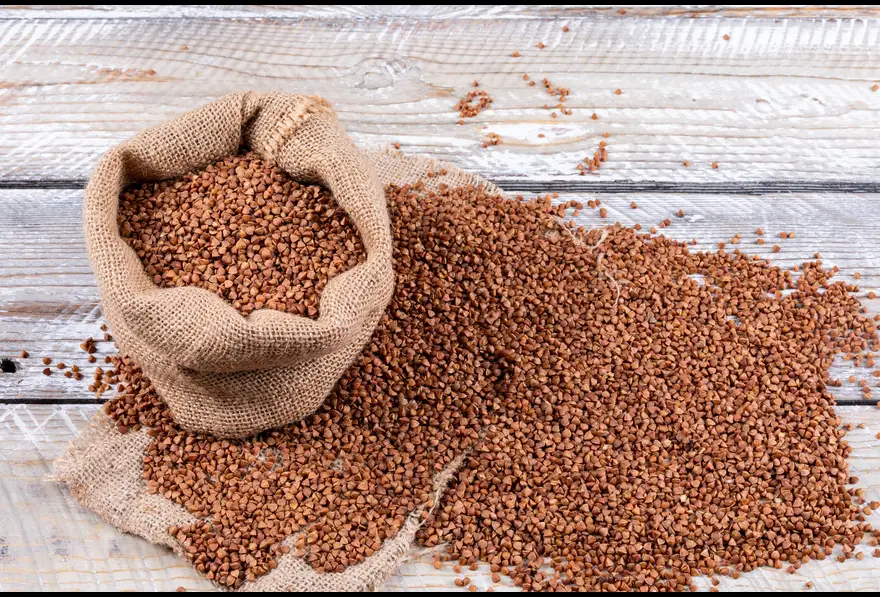HOMA IR Test
Also known as: HOMA Index (Insulin Resistance Test), Flouride Plasma
HOMA IR Test Overview
The Homeostatic Model Assessment for Insulin Resistance (HOMA IR) test is a widely used clinical and research tool that estimates insulin resistance and beta-cell function by analysing fasting blood glucose and insulin levels. Developed in 1985, this mathematical model describes glucose regulation as a feedback loop between the body's insulin production and glucose uptake.
The resulting HOMA IR blood test score reflects the balance between these two factors, indicating how resistant the body's cells are to insulin's effects. Requiring only a single fasting blood sample, the HOMA IR test provides a simple yet powerful means of identifying individuals at risk for insulin resistance-related conditions.
Fasting C-Peptide is Recommended For Patients On Insulin Therapy. Insulin & glucose test are done in fasting. Homa Index calculator used for calculation of beta cell function, insulin sensitivity and insulin resistance index.
The HOMA (Homeostatic Model Assessment) Index Insulin Resistance Test is a blood test used to assess a person's insulin resistance level. Insulin resistance occurs when the body's cells become less responsive to the hormone insulin, which is responsible for helping the body use glucose (sugar) for energy. As a result, people with insulin resistance may have high levels of glucose in their blood, which can increase their risk for developing type 2 diabetes, cardiovascular disease, and other health problems. The test is based on the principle that the body's glucose and insulin levels are closely related and that when the body is functioning normally, glucose and insulin levels should be in balance.
Associated Tests:
PCOS Profile - 1
PCOS Profile - 2
PCOS profile - 3
HbA1C- Glycated Haemoglobin, by HPLC method
Insulin, Serum by CMIA
Written by: Supriya Kulkarni, Lead-Content & Training
Reasons for Undergoing the HOMA IR Test
There are several key reasons why your doctor may recommend a HOMA IR blood test:
- Screening for insulin resistance: Insulin resistance is a precursor to type 2 diabetes and metabolic syndrome. Identifying it early allows for timely interventions.
- Monitoring prediabetes: If you have borderline high blood sugar, the HOMA Index Insulin Resistance Test can help track your diabetes risk over time.
- Evaluating treatment response: The test can assess how well lifestyle changes or medications are improving your insulin sensitivity.
- Diagnosing related conditions: Insulin resistance is linked to other health issues like PCOS, fatty liver disease, and cardiovascular problems. The HOMA IR test can aid in their diagnosis.
- Research purposes: The test is often used in clinical studies to investigate diabetes risk factors and potential therapies.
In some cases, fasting glucose levels alone may not provide a complete picture of insulin dynamics, making the HOMA IR test a valuable diagnostic aid.
List of Parameters Considered During the HOMA IR Test
The HOMA Index Insulin Resistance test focuses on two key parameters:
- Fasting Blood Glucose (FBG): This measures your blood sugar level after an 8-12 hour fast, usually overnight. A normal FBG is below 100 mg/dL.
- Fasting Insulin: This test determines the amount of insulin in your blood under fasting conditions. Normal fasting insulin can vary by lab but is generally below 25 mIU/L.
Your HOMA IR test report will include your FBG and fasting insulin results, which are plugged into an equation to calculate your HOMA-IR score.
HOMA IR Test Preparation
To ensure accurate HOMA IR test results, proper preparation is key. Here's what you need to do:
- Fast for 8-12 hours before your blood draw. Usually, this means no food or drink (except water) after dinner and overnight.
- Avoid strenuous exercise for 24 hours prior, as this can affect your insulin levels.
- Inform your doctor about any medications you take, as some (like steroids) can impact insulin sensitivity. You may need to temporarily stop certain drugs.
- Schedule your test in the morning if possible to minimise the effects of daily hormone fluctuations.
- Stay hydrated with water, but avoid coffee, tea, and other beverages during your fast.
By following these guidelines, you'll help ensure your HOMA IR test accurately reflects your body's insulin resistance status.
Procedure for the HOMA IR Test
The actual procedure for the HOMA IR blood test is relatively simple and quick. Here's what you can expect:
- After fasting overnight, you'll arrive at the lab or doctor's office in the morning.
- A healthcare professional will clean an area of your skin, usually the inside of your elbow, with an antiseptic wipe.
- They'll place an elastic band around your upper arm to make your veins more prominent.
- Using a fine needle, they'll draw a small blood sample from a vein into a test tube. You may feel a slight sting.
- After collecting the sample, they'll remove the elastic band and place a bandage over the site.
- The blood sample is then sent to the lab for analysis of glucose and insulin levels.
- Your HOMA-IR score is calculated from these measurements.
The whole process typically takes just a few minutes. You may have some minor bruising at the blood draw site, but this should resolve within a few days. Your HOMA IR test report is usually available within a few business days.
Purpose of the HOMA IR Test
The primary purposes of the HOMA IR test include:
- Identifying insulin resistance, a condition where cells respond poorly to insulin, leading to elevated blood sugar
- Estimating the function of pancreatic beta cells, which produce insulin
- Detecting early metabolic dysfunction, such as insulin resistance, before the onset of overt diabetes
- Stratifying risk for developing cardiovascular disease and metabolic syndrome associated with insulin resistance
- Evaluating the impact of treatments such as lifestyle modification, weight loss, or medications on insulin sensitivity
- Aiding clinical decisions and customising patient management in metabolic and endocrine disorders
By providing insights into insulin resistance and beta-cell function, the HOMA Index Insulin Resistance Test helps doctors develop targeted interventions and monitor patient progress.
HOMA IR Test Results & Interpretation
Interpreting HOMA IR test results requires an understanding of the scoring system and its implications:
- Fasting Blood Glucose (FBG): A normal FBG is under 100 mg/dL. Between 100-125 mg/dL is considered prediabetes, while 126 mg/dL or above on two separate tests indicates diabetes.
- Fasting Insulin: Normal ranges can vary but are usually below 25 mIU/L. High fasting insulin with normal blood sugar points to insulin resistance.
- HOMA-IR Score: The cut-off for insulin resistance varies by population and study but is often around 2.5-3.0. Higher scores suggest greater insulin resistance.
It's important to recognise the limitations of the HOMA IR test, such as variability with assay methods and physiological states like stress or illness. Your doctor will consider your HOMA IR test report in conjunction with your overall health profile to determine the most appropriate course of action.
Risks Associated With The HOMA IR Test
The HOMA IR blood test is a low-risk procedure involving a standard blood draw.
Potential risks include:
- Minor bruising or bleeding at the needle insertion site
- Lightheadedness or fainting during blood collection
- Rarely, infection at the puncture site if proper hygiene is not maintained
Most individuals tolerate the test well with minimal discomfort. If you have a history of bleeding disorders or are taking blood-thinning medications, inform your doctor before the test.
Home Collection for HOMA IR Test Near You
Getting a HOMA IR test is now convinent than ever with the home sample collection. Metropolis Healthcare, a leading chain of diagnostic labs across India, offers at-home phlebotomy services for HOMA IR blood test and other key health markers. The team of skilled technicians will come to your doorstep to collect your fasting blood sample in the comfort of your own home.
The sample is then processed in Metropolis state-of-the-art labs, ensuring accurate and reliable results. Your HOMA IR test report is delivered straight to your email and can also be accessed via the user-friendly Metropolis TruHealth app.
HOMA Index (Insulin Resistance Test), Flouride Plasma Price
Metropolis Healthcare is a leading diagnostics centre and pathology lab in India equipped with the latest state-of-the-art technologies that provides the HOMA Index (Insulin Resistance Test), Flouride Plasma with a clear pricing structure.
The HOMA Index (Insulin Resistance Test), Flouride Plasma Price in Hyderabad is ₹ 1,200 .
We are committed to deliver accurate and quality results from the best labs in India with complete transparency regarding test cost and turnaround time. No matter where you are, we strive to offer patients high-quality service that is affordable and accessible.
Frequently Asked Questions
- HOMA (Homeostatic Model Assessment) Index Insulin Resistance Test is used in clinical practice to evaluate people who are at risk for developing type 2 diabetes or other metabolic disorders.
The HOMA Index Insulin Resistance Test calculates insulin resistance by measuring both fasting insulin and fasting glucose levels in the blood.
A higher HOMA Index score indicates greater insulin resistance, meaning that the body is less efficient at using insulin to regulate blood sugar levels.
The test involves drawing a small amount of blood from a vein in your arm. A healthcare professional will clean the area with an antiseptic, wrap an elastic band around your upper arm to make the veins more visible, and insert a needle into a vein to collect the blood sample. You may feel a brief prick or stinging sensation when the needle is inserted, but the procedure is generally painless.
No special preparation is required for the test. However, it is recommended that you consult with your healthcare provider before taking the test, as they may have specific instructions or recommendations based on your individual medical history and current health status.
Some indications for getting the HOMA Index Insulin Resistance Test done include:
- Having a family history of type 2 diabetes or other metabolic disorders.
- Being overweight or obese.
- Having high blood pressure or high cholesterol.
- Having a sedentary lifestyle.
- Having polycystic ovary syndrome (PCOS) or other endocrine disorders.
- Having a history of gestational diabetes during pregnancy.
- Having metabolic syndrome or insulin resistance.
Other blood tests that may be ordered in conjunction with the HOMA Index Insulin Resistance Test include:
- Fasting blood glucose: This test measures the level of glucose in the blood after an overnight fast and is used to screen for diabetes and prediabetes.
- Hemoglobin A1C: This test measures the average blood glucose level over the past 2-3 months and is used to diagnose and monitor diabetes.
- Insulin: This test measures the level of insulin in the blood and is used to evaluate insulin resistance.
- Lipid panel: This test measures the level of cholesterol and triglycerides in the blood and is used to assess cardiovascular risk.
- Liver function tests: This test measures the level of certain enzymes and proteins in the blood that are produced by the liver and can indicate liver damage or disease.
- Kidney function tests: This test measures the level of certain substances in the blood that are produced by the kidneys and can indicate kidney damage or disease.
- C-peptide measurement is more meaningful in patients receiving exogenous insulin
Homeostatic Model Assessment of Insulin Resistance Test
HOMA-IR Test
Ratings & Reviews (0)
Why Metropolis?
Metropolis has a team of 200 senior pathologists and over 2000 technicians delivering diagnostic solutions in the areas of routine, semi specialty and super specialty domains like Oncology, Neurology, Gynaecology, Nephrology and many more.
We offer a comprehensive range of 4000+ clinical laboratory tests and profiles, which are used for prediction, early detection, diagnostic screening, confirmation and/or monitoring of the disease.



















 WhatsApp
WhatsApp